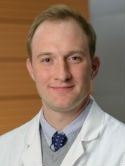Three-year outcomes in recipients of mismatched unrelated bone marrow donor transplants using post-transplantation cyclophosphamide: Follow-up from a national marrow donor program-sponsored prospective clinical trial Journal Article
| Authors: | Shaw, B. E.; Jimenez-Jimenez, A. M.; Burns, L. J.; Logan, B. R.; Khimani, F.; Shaffer, B. C.; Shah, N. N.; Mussetter, A.; Tang, X. Y.; McCarty, J. M.; Alavi, A.; Farhadfar, N.; Jamieson, K.; Hardy, N. M.; Choe, H.; Ambinder, R. F.; Anasetti, C.; Perales, M. A.; Spellman, S. R.; Howard, A.; Komanduri, K. V.; Luznik, L.; Norkin, M.; Pidala, J. A.; Ratanatharathorn, V.; Confer, D. L.; Devine, S. M.; Horowitz, M. M.; Bolaños-Meade, J. |
| Article Title: | Three-year outcomes in recipients of mismatched unrelated bone marrow donor transplants using post-transplantation cyclophosphamide: Follow-up from a national marrow donor program-sponsored prospective clinical trial |
| Abstract: | The use of post-transplantation cyclophosphamide (PTCy) as graft-versus-host disease (GVHD) prophylaxis has resulted in reductions in GVHD and improved outcomes in allogeneic hematopoietic cell transplantation (HCT) using HLA-mismatched related donors. We report the 3-year outcomes of the first multicenter prospective clinical trial using PTCy in the setting of mismatched unrelated donor (MMUD) bone marrow HCT. The study enrolled 80 patients, treated with either myeloablative conditioning (MAC; n = 40) or reduced-intensity conditioning (RIC; n = 40), with the primary endpoint of 1-year overall survival (OS). The median follow-up for this study was 34 months (range, 12 to 46 months) in the RIC group and 36 months (range, 18 to 49 months) in the MAC group. Three-year OS and nonrelapse mortality were 70% and 15%, respectively, in the RIC group and 62% and 10% in the MAC group. No GVHD was reported after 1 year. The incidence of relapse was 29% in the RIC group and 51% in the MAC group. OS did not differ based on HLA match grade (63% in the 7/8 strata and 71% in the 4 to 6/8 strata). These encouraging outcomes, which were sustained for 3 years post-HCT, support the continued exploration of MMUD HCT using a PTCy platform. Important future areas to address include relapse reduction and furthering our understanding of optimal donor selection based on HLA and non-HLA factors. © 2023 The American Society for Transplantation and Cellular Therapy |
| Keywords: | adolescent; adult; controlled study; aged; middle aged; major clinical study; overall survival; clinical trial; mortality; follow up; follow-up studies; prospective study; prospective studies; phase 2 clinical trial; bone marrow; relapse; recurrence; cyclophosphamide; myeloablative conditioning; multicenter study; graft versus host reaction; reduced intensity conditioning; recurrent disease; bone marrow transplantation; graft vs host disease; sirolimus; graft recipient; hla; unrelated donor; clinical outcome; unrelated donors; hematopoietic cell transplant; bone marrow donor; mycophenolate mofetil; humans; human; male; female; article; mismatched unrelated donor; post transplant cyclophosphamide |
| Journal Title: | Transplantation and Cellular Therapy |
| Volume: | 29 |
| Issue: | 3 |
| ISSN: | 2666-6375 |
| Publisher: | Elsevier Inc. |
| Date Published: | 2023-03-01 |
| Start Page: | 208.e1 |
| End Page: | 208.e6 |
| Language: | English |
| DOI: | 10.1016/j.jtct.2022.12.017 |
| PUBMED: | 36584941 |
| PROVIDER: | scopus |
| PMCID: | PMC9992261 |
| DOI/URL: | |
| Notes: | Article -- Source: Scopus |




